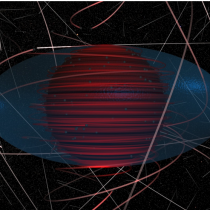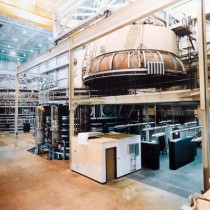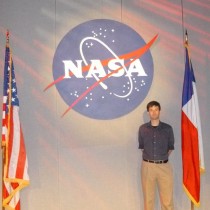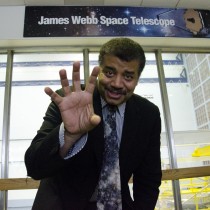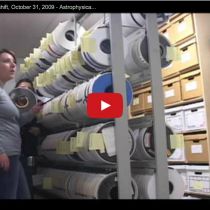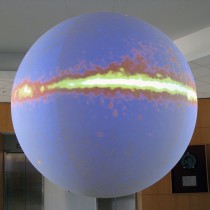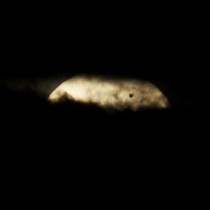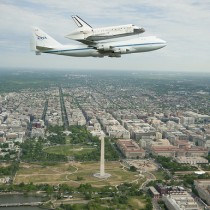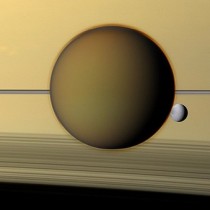Black Hole Laboratories for Dark Matter
- By Maggie Masetti
- August 5, 2015
- Comments Off on Black Hole Laboratories for Dark Matter
There is a lot we don’t know about dark matter – like what exactly it is. Because of this, we are always looking for ways to study it. It turns out that black holes might make the perfect laboratory environment for better understanding both black holes and the nature of … Continue Reading →
Protecting Test Hardware to Protect Flight Hardware
- By Maggie Masetti
- July 15, 2015
- Comments Off on Protecting Test Hardware to Protect Flight Hardware
The title may seem a little circular, but this is not a story that often gets told – that is, we have to keep our test hardware clean to keep our flight hardware clean. To that end, a new NASA Goddard tech is being tested out in NASA Johnson’s giant … Continue Reading →
The Space Environment Simulator
- By Maggie Masetti
- December 17, 2014
- Comments Off on The Space Environment Simulator
One of the coolest (literally!) facilities at NASA Goddard is the Space Environment Simulator (SES). It’s a massive thermal vacuum chamber, which is used to expose spacecraft and their components to environmental conditions like those they will experience in space. Image Credit: Maggie Masetti From this page on unique Goddard … Continue Reading →
Mr. Clark Goes to Goddard
- By Maggie Masetti
- November 18, 2014
- Comments Off on Mr. Clark Goes to Goddard
Occasional Blueshift blogger Amber Straughn is currently working on Hubble’s 25th anniversary celebration. Currently working for her as an intern is Carl Clark. Carl has written the following blog for us about himself, getting to work on Hubble, and his general love for NASA. Enjoy! I am Carl Clark, a … Continue Reading →
Neil deGrasse Tyson Pays a Visit
- By Maggie Masetti
- September 8, 2014
- Comments Off on Neil deGrasse Tyson Pays a Visit
While in DC for a Cosmos screening, a simple email from the James Webb Space Telescope team was all it took to get Dr. Neil deGrasse Tyson (astronomer, Hayden Planetarium director, and general advocate for science) to come by NASA Goddard for a visit. It was truly exciting to meet … Continue Reading →
Astrophysical Activity Revisited
- By Sara Mitchell
- October 31, 2012
- Comments Off on Astrophysical Activity Revisited
It’s Halloween, and the Blueshift team wants to keep you in the holiday spirit – but with an astronomical twist. We’re running a costume contest, we posted a gallery of spooky astronomy, and now we want to share a blast from the past! We made this video three years ago, … Continue Reading →
Science on a Sphere
- By Maggie Masetti
- August 27, 2012
- 3 Comments
One of the things you can see if you visit NASA Goddard (or dozens of museums and other institutions worldwide) is a 68-inch sphere on which moving images are projected – it’s called “Science on a Sphere.” Goddard has one on display in its Visitor Center, and there’s also a … Continue Reading →
Observing the Sun to Learn About the Planets
- By Alexe Helmke
- July 2, 2012
- 1 Comment
We have had three rare celestial events in succession – an annular solar eclipse on May 20 (May 21 in the Eastern Hemisphere), a partial lunar eclipse on June 4, and a Transit of Venus on June 5/6. Credit: Shannon Hall Credit: Craig Markwardt The first image here is a … Continue Reading →
The Last Flight of Discovery
- By Maggie Masetti
- April 18, 2012
- Comments Off on The Last Flight of Discovery
Today we said a bittersweet farewell to the space shuttle orbiter Discovery, as it headed off to retirement at the National Air and Space Museum Steven F. Udvar-Hazy Center atop a special 747. On its way to Dulles Airport (where it landed just outside DC) from Kennedy Space Center (where … Continue Reading →
Awesomeness Round-Up – 1/4/12
- By Maggie Masetti
- January 4, 2012
- 2 Comments
There are gorgeous new images out from NASA’s Cassini spacecraft. Here, Saturn’s third-largest moon, Dione, can be seen through the haze of the planet’s largest moon, Titan, in this view of the two posing before the planet and its rings. There are more on the Cassini website. Credit: NASA


